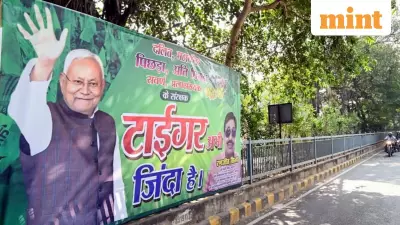
The 2025 Bihar assembly elections witnessed a significant fragmentation of the political space beyond the two major alliances, with several smaller parties carving out their own constituencies and potentially influencing the final outcome. The performance of parties like the Lok Janshakti Party (Ram Vilas), All India Majlis-e-Ittehadul Muslimeen, and Vikassheel Insaan Party has added a new layer of complexity to the state's political arithmetic.
The Performance of Key Third Space Contenders
The Lok Janshakti Party (Ram Vilas) led by Chirag Paswan emerged as one of the most significant players in this fragmented landscape. The party contested the elections independently, distancing itself from both the National Democratic Alliance and the Mahagathbandhan. While the exact number of seats won is detailed in the source, their campaign focused heavily on the legacy of Ram Vilas Paswan and a development-oriented agenda, aiming to cut into the vote share of the major coalitions, particularly in the Hajipur and surrounding regions.
Asaduddin Owaisi's AIMIM continued its strategy of making inroads into the Muslim-majority constituencies of the Seemanchal region. Building on its previous performances, the party worked to consolidate a significant portion of the minority vote, which has traditionally been a stronghold of the Rashtriya Janata Dal within the Mahagathbandhan. Their performance in key seats is crucial to understanding the final tally of the grand alliance.
The Vikassheel Insaan Party, under the leadership of Mukesh Sahani, also threw its hat in the ring, aiming to mobilize the Nishad and other Extremely Backward Class communities. Their presence in the fray was seen as a potential spoiler for parties that rely heavily on EBC votes, further dividing the electorate beyond the binary of NDA versus Mahagathbandhan.
Impact on Major Political Alliances
The collective impact of these third-space parties has been profound. By contesting separately, they have fragmented the vote in numerous constituencies, making it difficult for either the NDA or the Mahagathbandhan to achieve a decisive majority on their own. This fragmentation is particularly evident in seats with a tight contest, where the votes secured by these smaller parties could have altered the outcome.
Political analysts suggest that this phenomenon has led to a multi-cornered contest in a significant number of assembly segments. The ability of these parties to act as kingmakers in a hung assembly scenario cannot be ruled out, as their support could be crucial for any alliance attempting to form a government.
Long-term Implications for Bihar Politics
The 2025 election results signal a potential long-term shift in Bihar's political culture. The consistent performance of smaller, identity-based or leader-centric parties indicates that the electorate is increasingly willing to look beyond the two main blocs. This could lead to a more fractured mandate in future elections, compelling larger parties to enter into complex post-poll negotiations or pre-poll understanding with these smaller entities.
The strategy of these third-space parties to focus on specific caste groups or regional issues has proven effective in carving out a niche. Whether this trend leads to a more representative democracy or results in political instability remains a key question for the state's future governance.
In conclusion, the 2025 Bihar assembly elections will be remembered not just for the performance of the NDA and Mahagathbandhan, but for the decisive role played by the fragmented third space. The performances of LJP (RV), AIMIM, and VIP have undoubtedly reshaped the political battlefield, setting a new precedent for elections to come.





